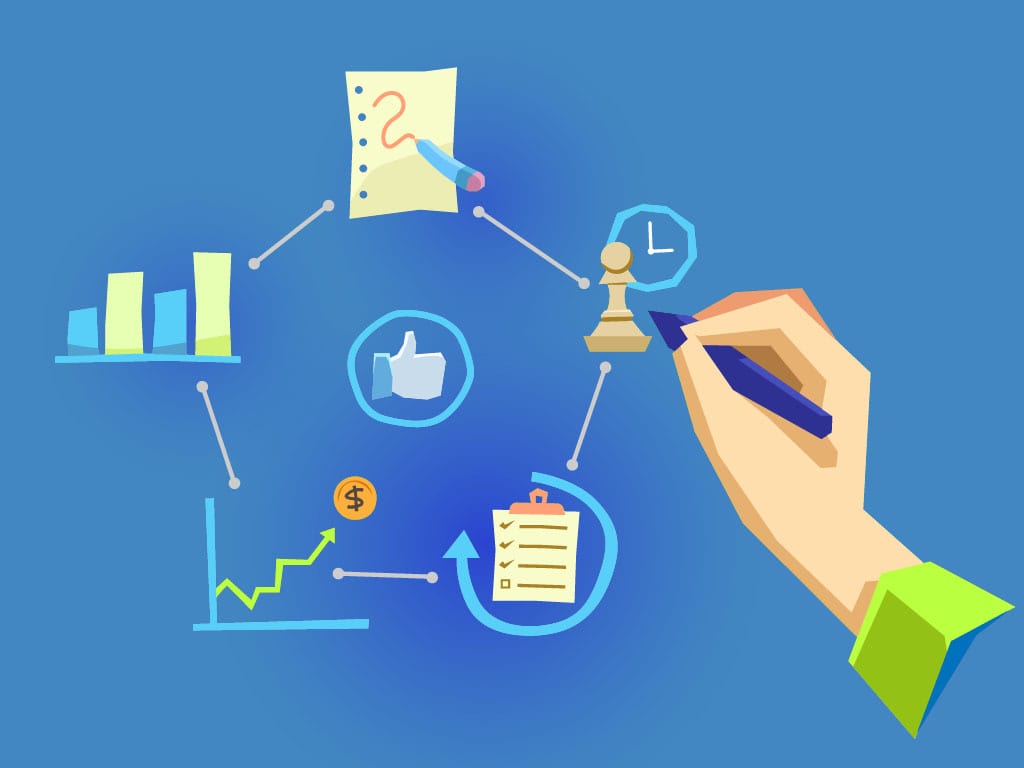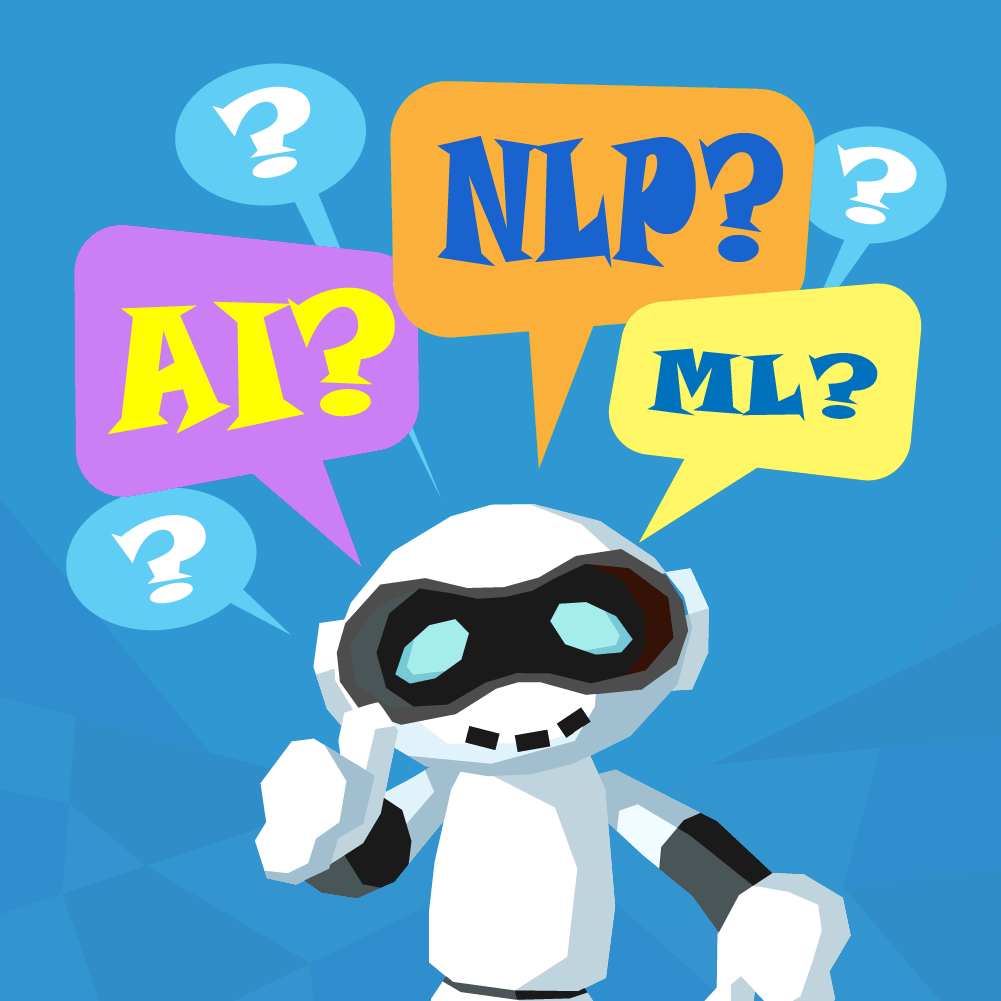7 Chatbot Benefits That Will Transform Your Business

Artificial Intelligence (AI), Machine Learning and Deep Learning (ML and DL, respectively), and the utilization of software/hardware robots within the realm of internal and external corporate processes, operations and workflows, have revolutionized the global ecosystem of SMEs and larger enterprises. Modern Chatbots are software robots that utilize advanced AI programming to automate business tasks and assist with customer-based operations, including sales, marketing, and customer service. As chatbot usage continues to rise and dramatically increase into 2018, many question the hype surrounding chatbots. Are these technological systems truly cost-effective, novel programs that can better their enterprise’s bottom line and increase both operational efficiency and workplace productivity? Global experience is showing that as long as chatbots are used effectively, they can dramatically increase a company’s bottom line by smartly automating a number of externally-facing and internally-facing workflows, reducing overhead and greatly benefiting a company. There is a reason why, as noted by Business Insider, 80 percent of businesses want a chatbot by 2020. Additionally, as noted by Juniper Research (as reported by IBM), by 2022, chatbots and NLP have the potential to save companies roughly $8 billion per year, and to reduce customer service costs by 30 percent.
There are a number of different types of chatbots, each with their own advantages and pertinent usage:
- Web-based: Web-based Chatbots are utilized within business websites via web application integration.
- Stand-alone: Though not as common as web-based or app-based, integrated Chatbots, standalone chatbots (e.g. voice or personal assistant bots) can be developed and utilized without being integrated within another software application.
- App-based: Since messaging and business apps benefit most from the use of externally (customer) facing chatbots, many Chatbots are integrated within already-existing messaging/business apps and platforms, such as Facebook, Facebook Messenger, Slack, and Skype.
For Chatbots to be utilized correctly and leveraged efficiently, they need to have the capability to evolve and grow with a scaling business, which requires three major factors:
- Artificial Intelligence, Machine/Deep Learning: AI is the study and application/development of robotic, computational systems that display human-like intellect, cognition and learning behaviors/skills. ML is a subset of AI which allows computer systems to operate in a manner without being explicitly programmed to do so, while DL indicates a computer system that learns from experience and thus “grows” in knowledge like a human.
- Conversational UI: Conversational UI is a novel, cutting-edge interface that allows humans to interact with computer systems via human-language based voice or text commands, which gives the chatbot ecosystem a way to enhance human-to-computer interactions.
- Natural Language Processing (NLP): NLP indicates the usage of voice-based human language words/commands that are processed and understood by a computer system, resulting in a pertinent reply (by the computer system) in response to the user’s initial command/words.
Chatbots can be utilized for internally-facing, business operations and workflows, or externally-facing (typically, customer-facing) business operations. For the former, this includes HR bots, and the automation of administrative tasks that helps to save time, reduce overhead, and allows skilled personnel to finish more critical business processes. Additionally, bots can be used for the analysis of business data with respect to Big Data analytics and the production of Business Intelligence (BI). For externally-facing operations, such bots are usually used to enhance sales, marketing and customer service operations, all of which has the potential to greatly increase the efficacy of all such operations in a company. Ultimately, chatbots/bots can be used for optimizing both internal and external business operations via smart automation and bot-assisted analytics operations.
As noted by Digital Doughnut, there are seven core advantages for using Chatbots in a business of any size, including:
- Leveraging bots on popular messaging/business mobile apps to reach a company’s user base in a new, powerful way.
- Enhancing customer service via automation workflows, which can increase both the efficiency and speed of Customer Service operations.
- Feedback and consistent engagement with customers is key for brands to stay relevant in the marketplace. While this is often done via social media and email campaigns, chatbots can be deployed on such platforms to increase customer engagement in a more human-like, interactive manner.
- Chatbots are able to integrate with a company’s already existing data analytics and data monitoring systems to present new insights to company executives in the form of Business Intelligence (BI).
- Qualifying leads and nurturing leads to reduce churn rates and increase conversion rates is critical in any business. Chatbots can be leveraged to help a marketing officer identify qualified leads, and to analyze KPIs/metrics so that time and resources can be applied only to leads that have a high likelihood of converting into customers.
- One of the main benefits of chatbots that utilize advanced AI/NLP is their ability to operate in a globalized market and assist customers all over the world in multiple languages, 24/7. This can greatly help to enhance and drive forward the customer service operations of any global company.
- While developing a standalone bot or a novel application may be expensive, deploying a powerful bot onto an already-existing business/messaging platform is typically very cheap, while such a novel implementation of this new technology can help to greatly save a company money and reduce overhead. Additionally, due to enabling robust automation processes and assisting employees with administrative and marketing/sales tasks, chatbots can reduce CACs (customer acquisition costs), as well as decrease the time frame associated with project life cycles.
Your 24/7 Digital Sales Representative
Chatbots are critical and very advantageous to marketing, sales and customer service departments for a number of reasons. While Chatbots can effectively be used for every phase of the marketing/sales funnel – including Top of the Funnel (ToFu), Middle of the Funnel (MoFu), and Bottom of the Funnel (BoFu) phases – customer service chatbots can assist customers 24/7. While human agents are essentially unable to be available to customers at all times, bots can be available instantly, and can help customers with a variety of small or larger issues in a way that many customers prefer – via texting.
Retain Attention or Lose Leads
Leads and Prospects spend an average total of less than a single minute on business web pages, with estimates ranging from 10–20 seconds, to around 58–59 seconds. Thus, it is important for business websites, apps and social media pages to retain the attention of leads and prospects, which often requires more than aesthetically pleasing designs. It requires powerful content and engagement with the prospect in a way that convinces the lead to be converted into a customer. Chatbots can help to immediately engage a lead with the most pertinent information and engagements possible (based on buyer personas), and can also help to ensure that all of the lead’s questions – that may result in a sale – are answered effectively and quickly.
Reasons Visitors Abandon Your Site
While there are a number of reasons why a customer may leave a company’s website, a few pertinent pieces of data reveal that slow website loading times, unpleasant website aesthetics, a non-user friendly interface, lack of pertinent information, and the inability for the customer to have critical questions answered all contribute to high bounce rates, among several other factors. Chatbots can greatly assist leads to have their key questions answered by operating as 24/7 digital agents, ensuring that all prospect inquiries are fully answered in a reasonable amount of time. Additionally, knowing the needs of customers is key in delivering the best experience to one’s user base, which can be both analyzed and implemented via the use of smart bots.
Increased Customer Engagement with Proactive Conversations
The core function of Chatbots is to engage in a relevant and critical conversation with prospects, leads, and customers to increase customer retention rates, reduce churn rates, and to ensure that business websites keep bounce rates at a minimum. Essentially, customers and prospects alike need to be engaged, and need a proactive, robust smart bot that both understands the needs of the prospect/customer, and is able to fully deliver and meet those needs quickly, efficiently and effectively. This means the chatbot must have a well-designed conversational function and conversational UI, along with being intelligent enough to learn from experiences, and to thus engage prospects and customers in the most effective manner based on customer data analytics and their relevant buyer personas. Ultimately, being proactive means understanding what a lead is seeking, and how to quickly offer the lead the most pertinent product/service in a way that leads to a sale.
How do Customers Want to be Helped?
According to the LivePerson’s Connecting Consumer Report, which surveyed 5,700 people across Europe, the U.S., and Australia, 83 percent of online shoppers need some form of support before completing a sale, and thus before converting from a lead/prospect to a full-fledged customer. The survey further reveals that a large number of leads abandon a website (before completing a purchase) due to unexpected delivery costs (70 percent), lack of key information on a product or service (56 percent), and a lack of an effective customer service system in place, resulting in said prospects being unable to find answers to their questions (37 percent) (“83% of online shoppers need support to complete a purchase: stats”)[4]. Though there are other reasons for website abandonment, the majority of core reasons associated with customers needing help before completing a purchase, are associated with needing guidance, answers and information about a product/service. These issues can be readily solved via a smart chatbot, which has the ability to help customers with FAQs (frequently asked questions), and can intelligently guide prospects during the entire buyer’s journey.
Be Present and Initiate the Conversation
A chatbot needs to not only be present in a business website/app’s system, but should proactively initiate and drive the sales process, while guiding the prospect during the entire buyer’s journey. This can be via a number of different ways, starting with the bot actively determining (via a conversation) what product/service the prospect is looking for, among other things:
- Disseminating specific delivery information for that specific lead
- Offering detailed information about the product/service
- Helping the prospect to navigate the website’s UI
- Offering specific answers to specific prospect questions
- Troubleshooting both product and/or website issues
- Helping the prospect conduct research on a product
- Helping with other, general customer service operations
Ultimately, chatbots are valuable digital guides that can help to drive an entire company’s sales process, while saving money via automation, reducing overhead, and (potentially) greatly increasing both the bottom and top lines of the enterprise due to a constant, 24/7 presence (among other things).
Answering Questions Directly
According to the LivePerson’s Connecting Report noted above, the second most critical reason why customers abandoned a website before completing a purchase was a lack of information on a product on the website. This typically leads to customer inquiries. However, because human agents are limited and cannot be available at all times, the use of chatbots can greatly increase the efficiency of sales operations by smartly answering all prospect/lead inquiries directly and quickly.
Monitoring Consumer Data & Gaining Insights
While chatbots are valuable digital tools for externally-facing, customer-related sales/marketing operations, they can also be used for internally-facing business operations, and the middle ground between external and internal operations.
As data science becomes a core part of company strategic planning and management, the use of Chatbots with enterprise systems can greatly enhance and optimize BI-producing operations, data analytics, and the strategic planning of customer-acquisition operations. Specifically, chatbots – as advanced AI systems – can be linked and integrated with enterprise systems, such as Customer Relationship Management (CRM) suites, in order to be “trained” (learn from experience/monitoring of customer data, via Deep Learning), and to gain a better understanding of customer needs to better serve said customers in the future, including building more robust buyer personas, proactively engaging with prospects on a new level, offering better products to leads based on past buying patterns, and optimizing the entire customer service/sales process. AI bots can also be used to analyze Big Data to present executives with robust and critical Business Intelligence that reveals important actionable insights to drive the company forward or in a new direction.
Provide Chatbot Surveys for Low Converting LPs
Chatbots can also be used for obtaining feedback via surveying and robust engagements with customers on social media, within business/messaging apps, and on business websites. While traditional surveys may not attract many customer responses, the significance of Chatbots revolves around engagement. Such surveybots can help a business obtain critical information about the needs, demographics, and buyer personas of prospects/customers. Such intelligence can help marketing officers and executives to better understand where they are succeeding most (with qualified leads), and where they are failing to achieve high conversion rates – and, specifically, why. This can all be optimized via highly engaging chatbots, which ultimately can be leveraged to be more efficient than traditional surveys and feedback systems.
Predict User Intent by Assessing Questions
Surveys are not simple marketing ploys for learning basic knowledge about a company’s customers; they offer crucial Intelligence that can help a company to better understand their prospect’s buying patterns, needs, and buying intent in the future. This valuable information can be used for the crafting of highly specialized and specific marketing and sales workflows and strategies.
Nurturing Lead Funnel with Guided Assistance
Throughout the entire marketing/sales funnel – from the ToFu, MoFu and BoFu phases – leads need to be nurtured and effectively guided with a knowledgeable and consistently-present assistant. While human agents may be needed for some phases or processes of the overarching marketing/sales process, ever-present digital bots can be developed to nurture leads according to marketing best practices, gently guide leads through the required phases and convert them into a customer.
Direct Buyer’s Journey Flow
Digital bots are powerful tools that can act as digital assistants, directing the entire buyer’s journey from the top of the marketing funnel to the bottom of the funnel, resulting in a sale. This includes workflows associated with each phases of the buyer’s journey – ToFu (educating prospects about the nature of their problem/solution, and about certain products/services offered), MoFu (revealing why the products/services offered are the perfect solution for the prospect’s needs), and BoFu (closing the sale) workflows and processes.
Filter Out Time Consuming Dead Ends
Filtering out unqualified leads from qualified leads is one of the most important requirements for any marketing department to apply resources only towards those leads that have a high probability of converting into customers. Chatbot analytics and deep learning capabilities allow such smart bots to understand customers and prospects on a new level, allowing marketing officers to not waste time and resources, but to glean out the qualified leads from the unqualified ones, thus mitigating marketing dead ends and reducing overhead.
Piggybacking on Trendy Messaging App Traffic
While developing a stand-alone chatbot may benefit larger enterprises, the development and deployment of Chatbots for SMEs is very feasible via already-existing chatbot platforms, such as popular messaging and business apps (e.g. Facebook Messenger, Slack, etc.). Having a massive user base already in place that businesses can leverage, such messaging platforms often allow for the feasible development and deployment of chatbots via development kits – including no-code development frameworks. This ability to piggyback on popular messaging platforms is an attractive and lucrative feature that allows even small businesses to utilize smart bots for their business operations.
Messaging Applications on the Rise
As noted by Business Insider, as of 2015 messaging apps surpassed social media apps as the most used/downloaded apps, and the most retained apps on mobile platforms. This is a significant trend, as businesses can leverage a number of powerful messaging and business systems – such as Facebook Messenger and Slack – by integrating robust chatbots into such systems in order to communicate with their customer base in a whole new way. Such a change in communication operations can greatly enhance and optimize the customer experience (via chatbots), leading to more sales.
Users Are Less Likely to Switch for Apps
One of the most significant factors associated with the rise in messaging apps is the high level of retention rates associated with these apps. While users are currently downloading a very low number of apps,, messaging apps are the most consistently used and retained apps.. Because of this, the utilization of chatbots within messaging systems is likely to increase. Since there is no indication that users would likely switch to stand-alone business apps to interact with their favorite brands, businesses need to meet customers where they are – in messaging apps.
Ways Chatbots Help You Save Money
There are a multitude of possible ways that a chatbot/AI bot can save a company large amounts of money, time and overhead/resources, depending on the chatbot used. Ultimately, the goals of the company – and thus the strategic development and purpose of the bot – helps to determine how much of a financial gain a chatbot can offer an enterprise.
Consider Reducing Customer Service Team
Due to the automation capabilities of advanced AI-based chatbots, many customer service workflows – and even sales/marketing, HR/admin operations – can be completely or partly carried out by a well-developed bot. While some human agents may be needed for the implementation of certain operations, it is entirely possible for businesses to greatly reduce costs by decreasing their customer service, sales, marketing, and HR teams.
Less Time Wasted Answering Trivial Questions
Human customer service representatives often spend great amounts of time answering trivial, simple questions, all of which could feasibly be answered by a well-developed bot. While a FAQ page may help with answering certain questions, specific customer inquiries often need a more direct line to an intelligent agent, be it human or chatbot. With these time-consuming tasks managed, chatbots can help to free personnel for more advanced tasks.
Able to Cater to Global Markets
In this globalized world, it is critical for businesses that wish to scale to develop their systems with the intent of reaching international markets. While this isn’t always easy with human agents, well-developed chatbots can aid a business in going global, with advanced NLP bots and AI-systems that can be programmed to understand global markets, and to learn how to reach global demographics via customer data analytics.
Multilingual Chatbots
NLP-based chatbots can be leveraged in many ways to help a company reach a global market. While a number of bilingual human agents would be needed to manually translate the inquiries and/or word of international customers, a single, well-developed chatbot can be programmed to understand any number of human languages, so businesses can equally reach a domestic and global audience, and scale to become an international enterprise. Since conversations are the core part of chatbots, it follows that a multilingual system is needed for a company to go global – a system that an AI-chatbot can readily be used for, along with a number of other advanced business operations.








